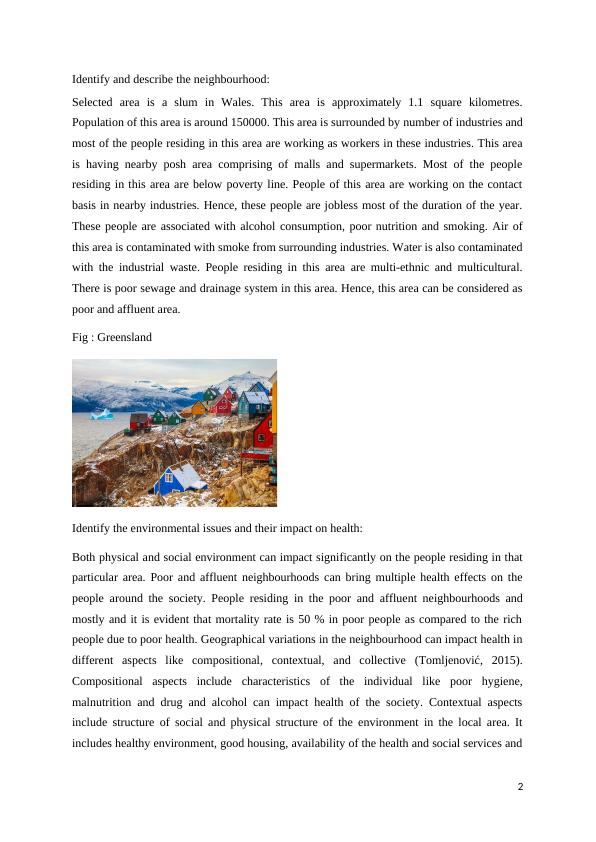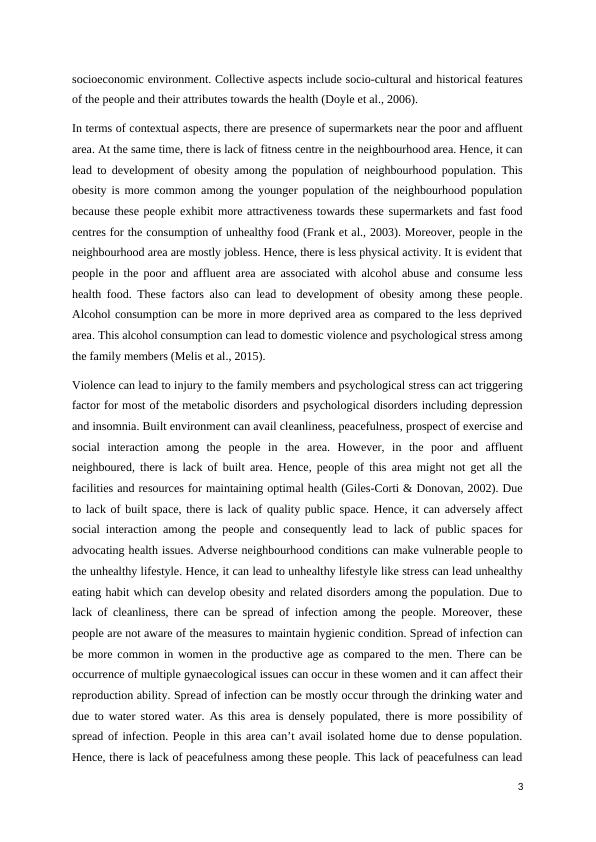Environmental Issues and Impact on Health in a Poor and Affluent Neighbourhood
Identify and describe the environmental issues in a defined neighbourhood that impact on health, and examine what is being done and/or what needs to be done to improve health in this setting.
11 Pages3715 Words149 Views
Added on 2023-06-13
About This Document
This article discusses the impact of poor and affluent neighbourhoods on the health of the people residing in the area. It identifies the environmental issues like air pollution, contaminated water, lack of physical activity, and their impact on health. It also suggests interventions like affordable housing, improved air quality, and proper disposal of industrial waste to address these issues. Subject: Public Health, Course Code: 1
Environmental Issues and Impact on Health in a Poor and Affluent Neighbourhood
Identify and describe the environmental issues in a defined neighbourhood that impact on health, and examine what is being done and/or what needs to be done to improve health in this setting.
Added on 2023-06-13
ShareRelated Documents
End of preview
Want to access all the pages? Upload your documents or become a member.
Health Inequalities Assignment
|9
|2159
|106
Current Public Health Issues in the UK: Analysis of Determinants, Health Care Professionals' Roles, and Infection Control Measures
|3
|2709
|338
Australian Aboriginal Women's Health Issues
|5
|1099
|14
Interprofessional Working to Tackle Childhood Obesity in Haringey
|15
|4134
|54
Case Study on Hypertension
|9
|1946
|28




